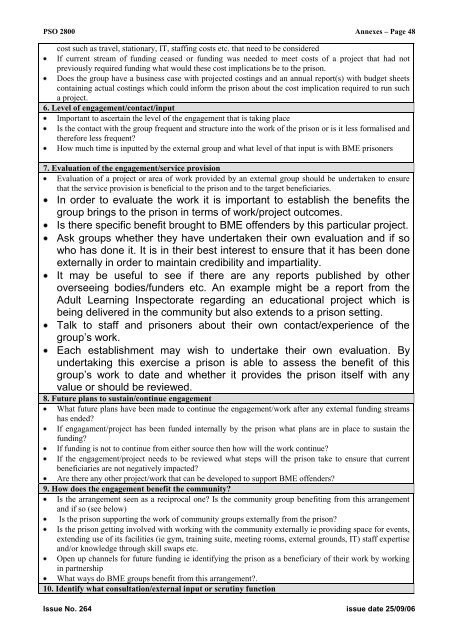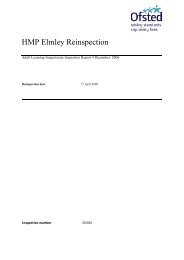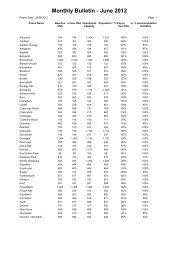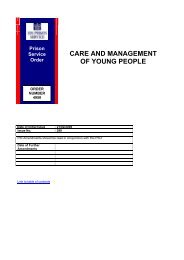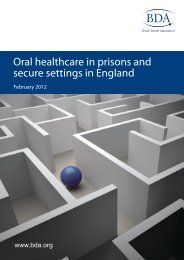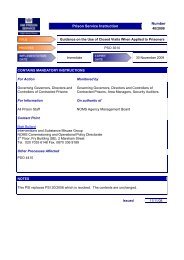PSO 2800 - Inside Time
PSO 2800 - Inside Time
PSO 2800 - Inside Time
- No tags were found...
Create successful ePaper yourself
Turn your PDF publications into a flip-book with our unique Google optimized e-Paper software.
<strong>PSO</strong> <strong>2800</strong> Annexes – Page 48cost such as travel, stationary, IT, staffing costs etc. that need to be consideredIf current stream of funding ceased or funding was needed to meet costs of a project that had notpreviously required funding what would these cost implications be to the prison.Does the group have a business case with projected costings and an annual report(s) with budget sheetscontaining actual costings which could inform the prison about the cost implication required to run sucha project.6. Level of engagement/contact/inputImportant to ascertain the level of the engagement that is taking placeIs the contact with the group frequent and structure into the work of the prison or is it less formalised andtherefore less frequent?How much time is inputted by the external group and what level of that input is with BME prisoners7. Evaluation of the engagement/service provisionEvaluation of a project or area of work provided by an external group should be undertaken to ensurethat the service provision is beneficial to the prison and to the target beneficiaries.In order to evaluate the work it is important to establish the benefits thegroup brings to the prison in terms of work/project outcomes.Is there specific benefit brought to BME offenders by this particular project.Ask groups whether they have undertaken their own evaluation and if sowho has done it. It is in their best interest to ensure that it has been doneexternally in order to maintain credibility and impartiality.It may be useful to see if there are any reports published by otheroverseeing bodies/funders etc. An example might be a report from theAdult Learning Inspectorate regarding an educational project which isbeing delivered in the community but also extends to a prison setting.Talk to staff and prisoners about their own contact/experience of thegroup‟s work.Each establishment may wish to undertake their own evaluation. Byundertaking this exercise a prison is able to assess the benefit of thisgroup‟s work to date and whether it provides the prison itself with anyvalue or should be reviewed.8. Future plans to sustain/continue engagementWhat future plans have been made to continue the engagement/work after any external funding streamshas ended?If engagament/project has been funded internally by the prison what plans are in place to sustain thefunding?If funding is not to continue from either source then how will the work continue?If the engagement/project needs to be reviewed what steps will the prison take to ensure that currentbeneficiaries are not negatively impacted?Are there any other project/work that can be developed to support BME offenders?9. How does the engagement benefit the community?Is the arrangement seen as a reciprocal one? Is the community group benefiting from this arrangementand if so (see below)Is the prison supporting the work of community groups externally from the prison?Is the prison getting involved with working with the community externally ie providing space for events,extending use of its facilities (ie gym, training suite, meeting rooms, external grounds, IT) staff expertiseand/or knowledge through skill swaps etc.Open up channels for future funding ie identifying the prison as a beneficiary of their work by workingin partnershipWhat ways do BME groups benefit from this arrangement?.10. Identify what consultation/external input or scrutiny functionIssue No. 264 issue date 25/09/06


